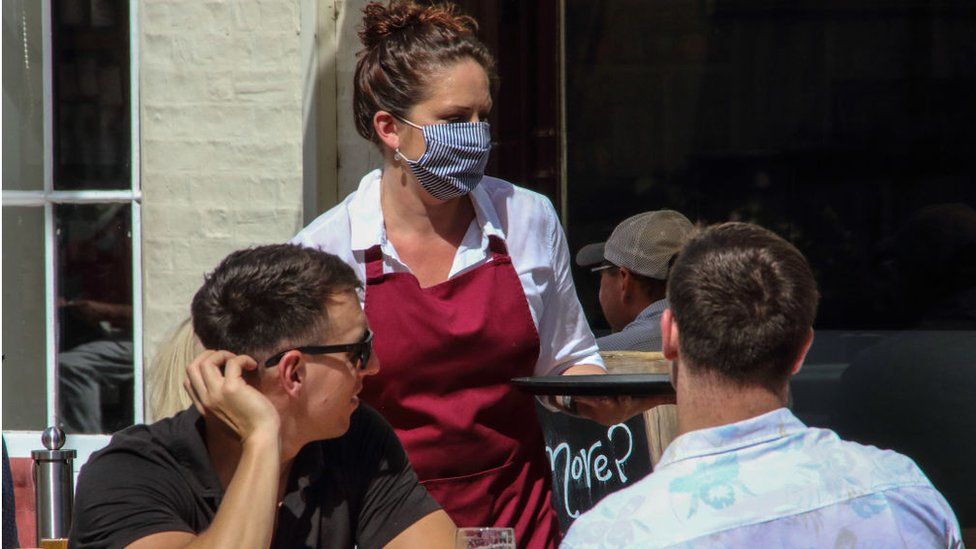Under-35s bearing brunt of jobs crisis
- Published
- comments

Younger people continue to bear the brunt of the jobs crisis amid widespread cuts in sectors such as hospitality, official figures show.
In the year to March, 811,000 payroll jobs were lost in the UK, with under-35s accounting for 80% of these cuts.
The data also showed the unemployment rate dipped to 4.9% in the three months to February - down from 5% previously.
This was despite most of the UK being under strict lockdown rules for at least some of the period.
The Office for National Statistics (ONS) said the jobs market "remains subdued", with five million people employed but still on furlough.
Head of economics at the British Chambers of Commerce, Suren Thiru, said: "Unemployment remains on course to peak towards the end of 2021, once the furlough scheme expires and those who stopped job hunting during the pandemic look to return to the workforce as restrictions ease.
"Although the furlough scheme will limit the peak in job losses, the longer-term structural unemployment caused by Covid-19, particularly among young people, may mean that the road back to pre-pandemic levels lags behind the wider economic recovery."
Overall, some 1.67 million people were unemployed between December and February. That is down 50,000 on the previous quarter but still 311,000 higher than a year ago.
But the ONS said younger people were suffering disproportionately, as sectors such as retail and hospitality were hit hard by the crisis.
People aged under 35 accounted for 635,000 payroll jobs lost in the year to March, with 436,000 of those positions held by people under 25.
Gerwyn Davies, senior policy adviser at the Chartered Institute of Professional Development, said the number of young people in employment had hit a "post-pandemic low".
"This reinforces the urgent case for apprenticeship incentives to be made more generous and targeted specifically at 18-24 year-olds. It also underlines the need to improve employers' awareness of traineeships and the Kickstart [work placement] Scheme."
It would be wrong to get carried away with the pleasant surprise of a dip in the official unemployment rate below 5%. The real pandemic picture is in the tax data for March. 813,000 fewer payrolls on the PAYE system versus a year ago, and four fifths of those jobs were lost to under 35s.
But the fact that the numbers in the first few months have been broadly stable is definitely a source of relief. Employers were able to navigate the second lockdown without widespread further job losses, thanks to the extension of support schemes such as furlough.
This provides a more solid basis than might have been expected for the phased reopening of the economy. There will be strains, especially as support is phased out in late summer. But these figures offer hope of a lower peak to unemployment, perhaps at around 6%, than had been expected.
The ONS said the overall jobs market had been "broadly stable" in recent months after the major shock of last spring, when where the economy contracted sharply.
ONS director of economic statistics Darren Morgan said the labour market "remains subdued" but that there were positive signs.
"With the prospect of businesses reopening, there was a marked rise in job vacancies in March, especially in sectors such as hospitality."
The Bank of England expects an economic rebound this year, as lockdown measures are eased and government support for jobs continues. But it says the recovery still depends on the "evolution of the pandemic".
Hannah Audino, an economist at PwC, said the stabilisation of the jobs market during the third national lockdown boded well for the UK economy.
"We expect a gradual recovery in the labour market in the coming months with the reopening of hospitality and retail, provided the government's roadmap to reopening the economy continues to go to plan."
- Published30 March 2021
- Published24 March 2021
- Published3 days ago
- Published18 March 2021